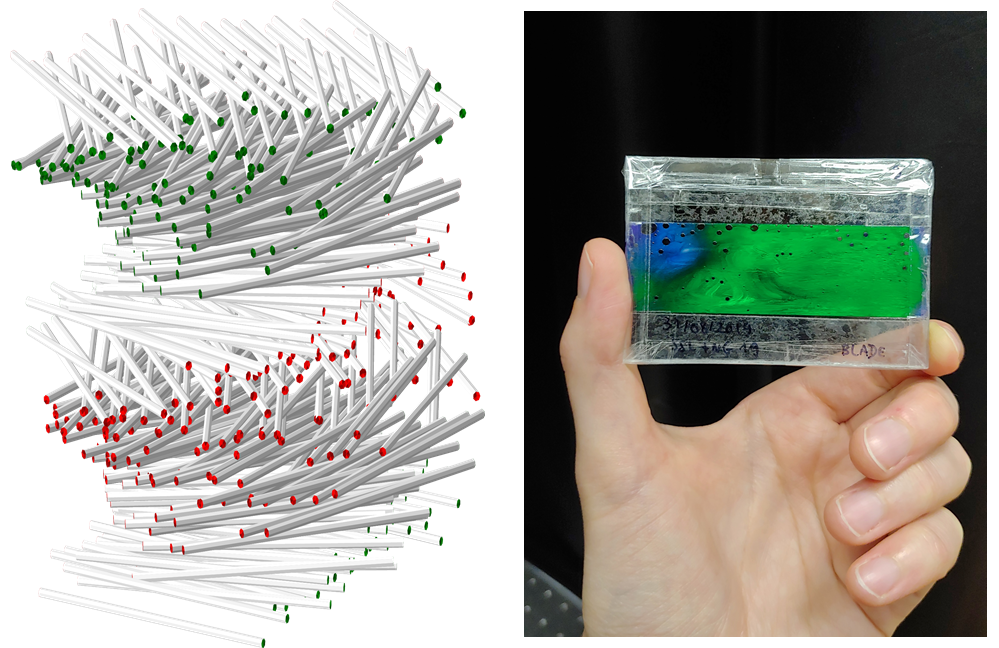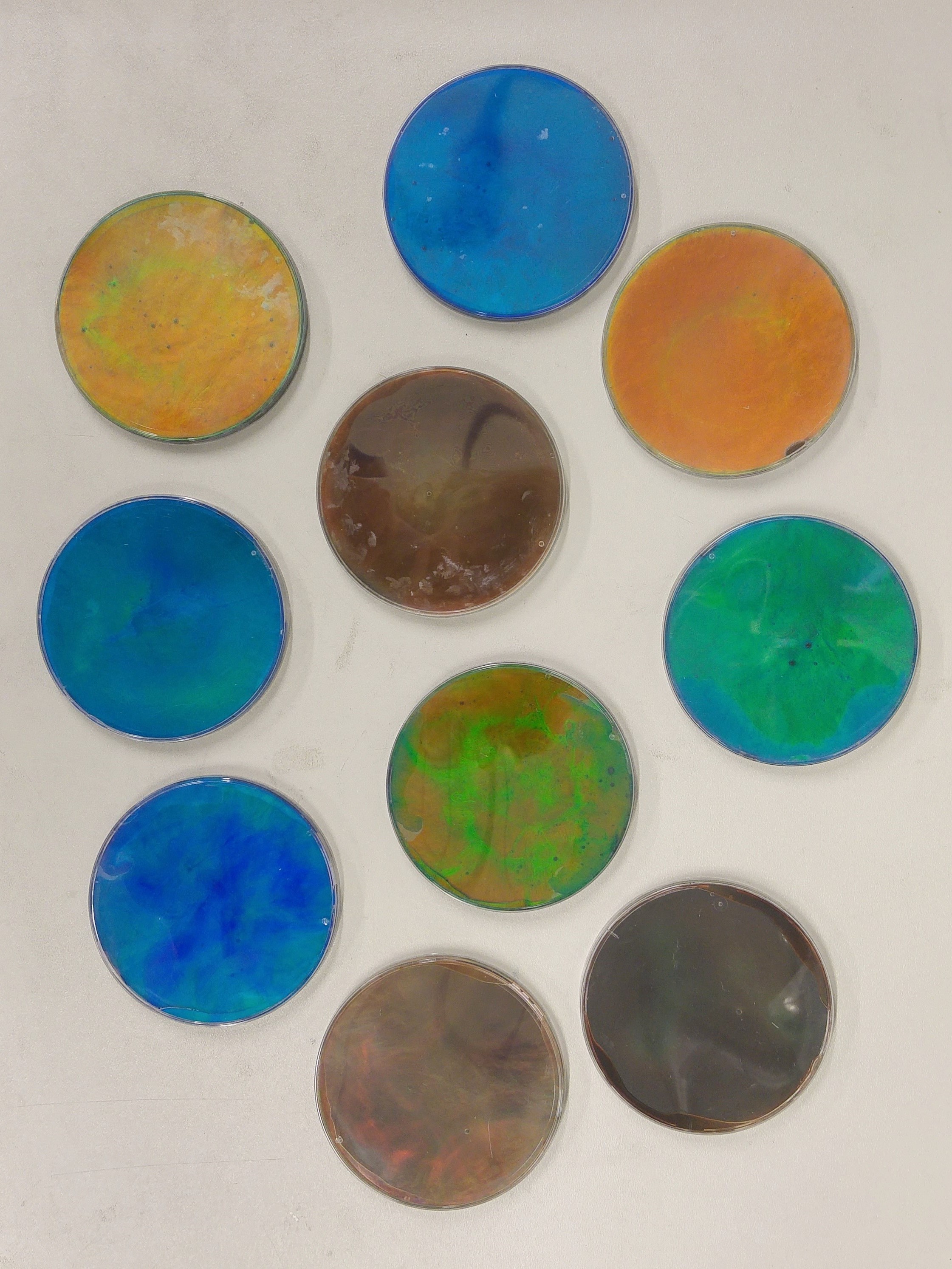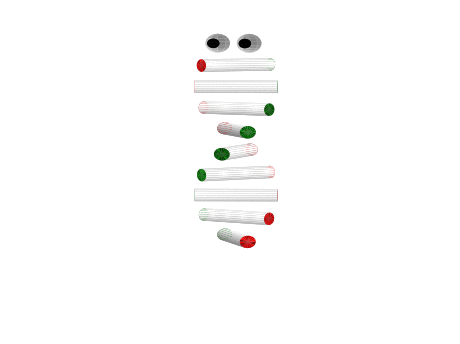
Research Associate
Before joining the Bio-inspired Photonics group in October 2017 to start my PhD, I had been studying the science of colour from a variety of perspectives such as engineering (during my Master in Printing Engineering at Grenoble Institute for Technology, France), communication (during my year abroad in the Packaging Development Master at Stuttgart Media University, Germany) and arts (in the Art-Studies program at Grenoble Applied Arts School, France). I had mostly encountered pigments and dyes, which give a material its colour depending on their chemical nature.
The coloured materials that I work on now are very different from classic inks and paintings: their colour arises from the physical interactions between light and the structure of the material at the nanoscale. The main material I work with is hydroxypropyl cellulose (HPC). It is a low-cost, non-toxic (and edible!) cellulose derivative that can self-assemble in water into a cholesteric liquid crystal. At the nanoscale, its structure consists in helicoidally arranged polymer chains that twist around the helical axis, at a periodicity called the pitch. The cholesteric structure selectively reflects light around a wavelength that is proportional to the pitch and depends on the angle of incidence, giving rise to bright iridescent colours.

Left: 3D schematic representation of a cholesteric liquid crystal. Right: Sample of hydroxypropyl cellulose and water showing a bright green colour.
Several cellulose derivatives such as hydroxypropyl-cellulose can self-assemble in water into such a structure. Being able to predict the visual appearance of their assemblies would be a step towards the fabrication of non-toxic, long-lasting and low-cost photonic pigments where a combination of the same two ingredients in the right conditions could lead to a variety of colours.

Samples of hydroxypropyl-cellulose in water, mixed at different ratios, that show different colours.
In macroscopic samples, a multitude of domains of various orientations coexist in the mesophase. During my PhD, I study how disorder at the scale of one domain (with a transfer matrix approach) and at the scale of a multidomain system (with Monte Carlo simulations) impacts the optical properties of the mesophase, and in particular its scattering properties. My work consists in developing modelling methods for cholesteric materials, as well as in applying these tools to hydroxypropyl cellulose, in combination with experimental data, to gain understanding on how the polymer’s properties impact the optical properties.
In my spare time, I reuse my codes to produce funny GIFs.

